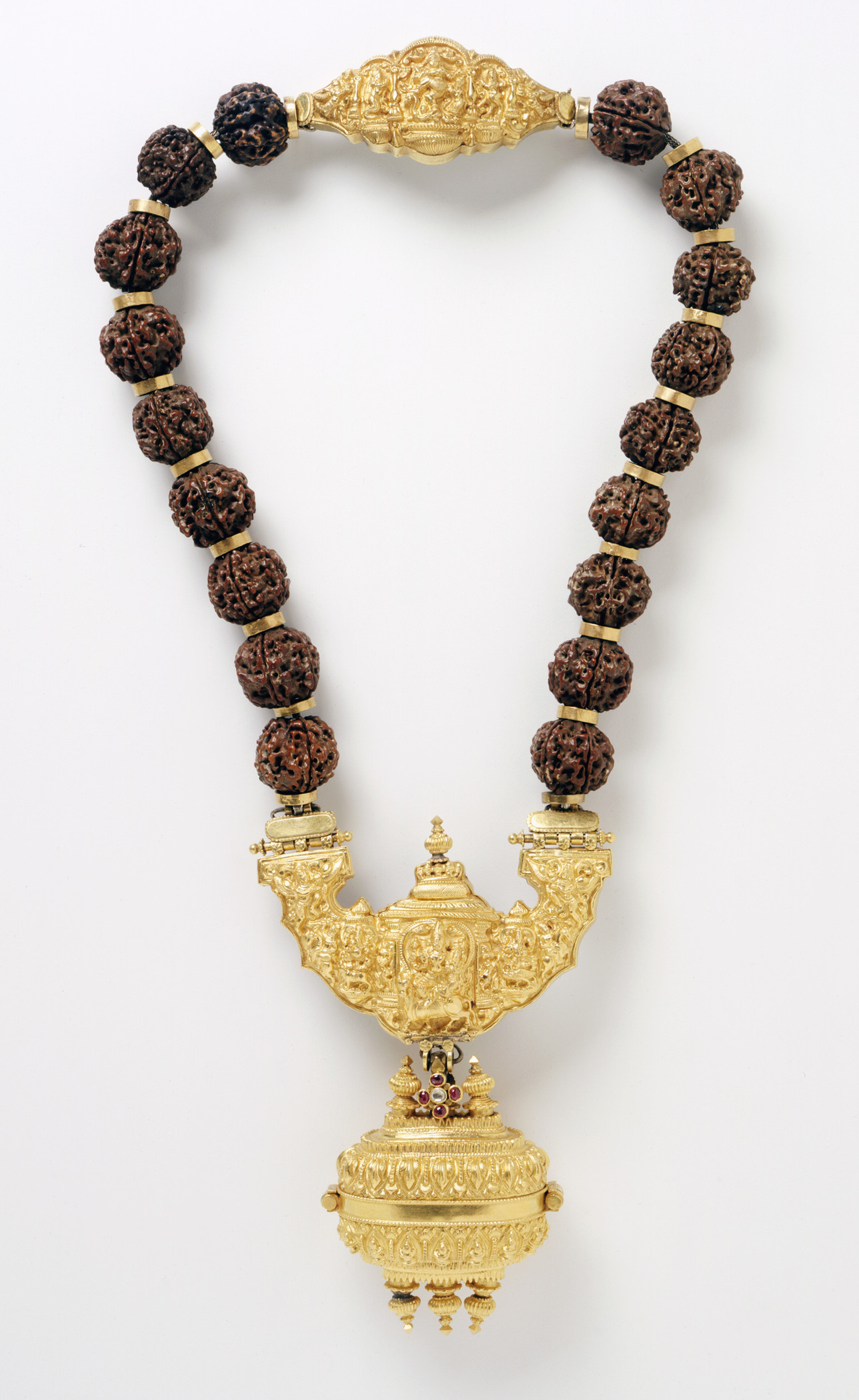Seeds
The Material of Memory, Migration, and Making
Before metal or glass, people carried seeds. Small and durable, they were among the first materials chosen for adornment. Strung as necklaces, sewn into garments, or stored for planting, they moved wherever humans moved.
Archaeological finds across continents show seeds used as ornament and exchange. Date pits, acacia, job’s tears, and palm nuts were pierced and polished long before industrial production. In many regions they served as currency or protection, their worth measured through use and meaning rather than rarity.
In parts of Sub-Saharan Africa, red seeds from the coral tree and the abrus plant were strung into belts and necklaces. These weren’t just ornamental—they acted as protective talismans and sometimes even as status markers. In India, rudraksha seeds—considered sacred to Shiva—were (and still are) used in prayer strands. In Mesoamerica, cacao beans once functioned as currency, and tamarind seeds were shaped into beads for children. Across the Andes, seeds of the achira and chonta palms became ceremonial adornments, often worn by dancers in agricultural rites.
These traditions were not isolated. Seed jewelry has moved across borders with people—through trade, pilgrimage, migration, and displacement. Shipwrecks off the African coast have yielded strands of organic beads, suggesting seedwork was part of the cargo of both trade and trauma. In diaspora, seeds became a way to hold onto homeland. A material of the land, carried by hand, that required no translation. For some communities, stringing familiar seeds into necklaces or braiding them into hair became a quiet way to preserve identity in unfamiliar places.
At Iaia Caravan, we’ve long been drawn to seeds not just for what they are, but for what they carry. They remind us that what endures isn’t always what glitters.
Many of our carved stone and gold forms take their shape from real seed specimens collected during travel—from snakefruit to conacaste to acacia. These are not exact replicas. They’re translations. Material echoes of resilience and adaptation, designed to remind us that craft is not always about permanence. Sometimes it’s about germination. A small, traveling form that contains something larger than itself.
In a world that often forgets the hands and histories behind what we wear, seeds ask us to slow down and look closer. They’re simple. But never accidental.
They are the original travelers.
And like all true adornment, they carry more than beauty—they carry us.

